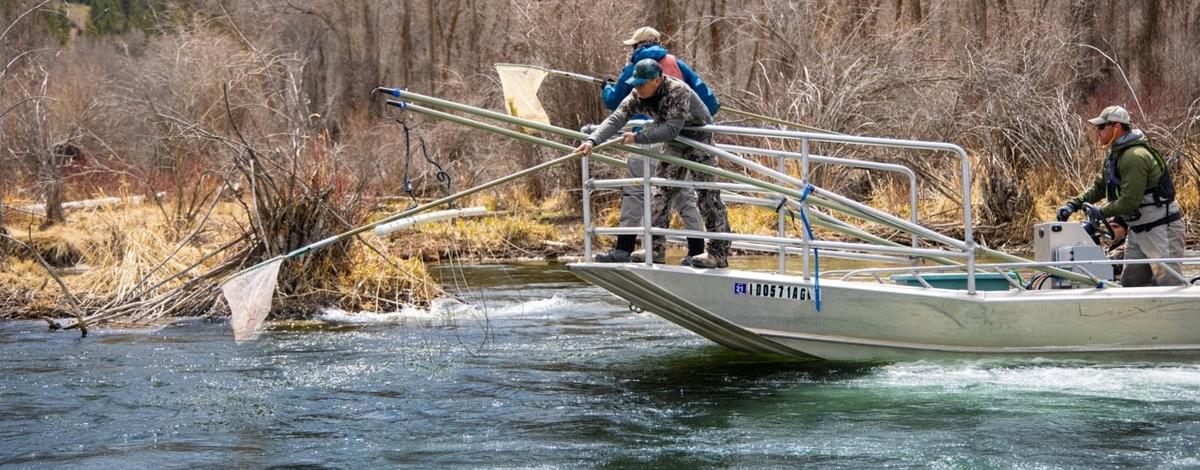In our April newsletter we described the background and justification for our ongoing efforts to conserve native cutthroat trout in the South Fork Snake River by suppressing rainbow trout. Below is an update with some preliminary results from our suppression efforts over the spring of 2022. Click on the picture below to view a short video showing some of the processes involved with rainbow trout suppression.
This is the second year where we attempted to achieve the goal of removing 30 percent of the rainbow trout population. We completed 16 days of electrofishing from April 18 through May 19, which was 8 days less than 2021. We typically operated two electrofishing boats, except on four days we experimented with operating four electrofishing boats.
In 2022, we averaged about two rainbow trout per minute of shocking, and we averaged about five hours of electrofishing per day which were both consistent with 2021 suppression. This resulted in the removal of 9,551 rainbow trout. We weighed and measured 342 (3.6 percent) rainbow trout, and they averaged 16.3 inches and 1.7 pounds.
We transported rainbow trout removed from the South Fork Snake River to four other fisheries. Most (n = 7,506) were transported to John’s Hole on the Snake River in Idaho Falls. Rainbow trout were also transported to the Big Lost River (n = 715) stocked at Jim Moore Pond (n = 652) and Trail Creek Pond (n = 427). Similar to last year, fish survived the removal and transport experience well, and on average, 97.5 percent of the fish swam free upon release.
We have yet to determine if electrofishing suppression is a viable management tool for the South Fork rainbow trout. If it works, we should observe a decline in age-1 rainbow trout abundance during our routine fall abundance estimates. It takes about a year and half for rainbow trout to grow to the size where we could capture them during our fall abundance estimates. So this fall we will be able to describe how the 2021 suppression impacted the rainbow trout population. Several more years of spring suppression and fall abundance surveys are needed to determine the efficacy of electrofishing suppression and whether this will be a long-term strategy to alleviate threats to the cutthroat population in the South Fork.
Our goal was to cause the population of rainbow trout to decline more than what natural reproduction could replace. We estimated that we needed to remove approximately 11,700 rainbow trout, which we conservatively estimated to be 30 percent of the rainbow trout population in the upper South Fork Snake River. We anticipated that removing that many trout via electrofishing was going to be a difficult goal to achieve, and we fell slightly short of that goal. For the second year in a row, the Rainbow Trout Harvest Incentive Program has contributed significantly to our achieving our management goals.
To date, anglers have submitted 1,478 rainbow trout to the program. Angler harvest, combined with suppression, has resulted in 11,029 rainbow trout removed from the South Fork, with six months of harvest remaining for anglers to catch another 671 rainbow trout and contribute. This emphasizes the important contribution from the anglers that contribute to the Rainbow Trout Harvest Incentive Program and is a poignant example of how anglers contribute to cutthroat trout management on the South Fork. These anglers also provided over 100 pounds of filets to local food banks. These contributions from our anglers not only benefit Yellowstone cutthroat trout, but our community as well.
We appreciate these contributions! To date, these anglers have been rewarded $2,700!

